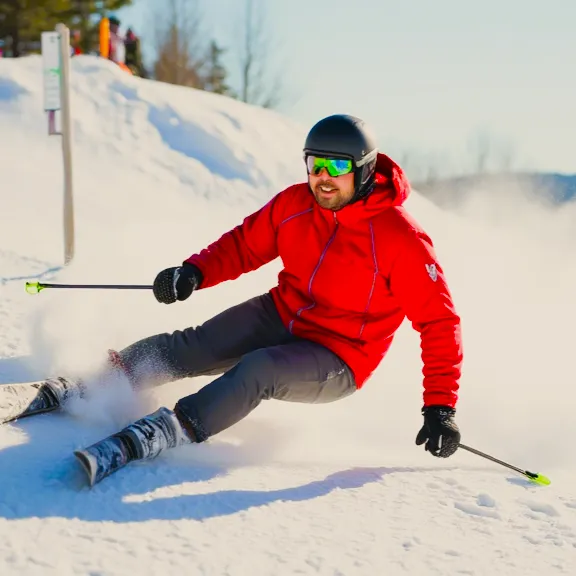
The SEO Avalanche Theory: What Works, What Fails, and the Need to Knows
The SEO Avalanche Technique has really caught the eye of many in the digital marketing world! It claims to provide sustainable organic growth while relying less on backlinks. Although, with many strategies that sound almost too good to be true, the reality is a bit more complex than the excitement suggests. The Avalanche Theory does come up with 'the goods' in many of its premises, and at the same time, it does have a little downside in certain aspects and certainly should not be seen as a complete system, yet some very good techniques that should not be overlooked are proving solid.
After analyzing real case studies, data from multiple implementations, and scrutinizing both success stories and failures, here's what online business owners may like to know about this approach—especially if you're running an e-commerce store or an affiliate marketing blog.
What Is the SEO Avalanche Theory?
The SEO Avalanche Technique, popularized by Chris Carter and rooted in earlier work by a mysterious contributor named "BoFu," operates on a simple premise: Google places websites into traffic tiers, and you can only rank for keywords appropriate to your current tier.
The strategy involves:
Starting with ultra-low volume keywords (often showing "0" monthly searches)
Gradually moving up to higher volume keywords as your site gains traffic
Building topical authority through consistent content creation
Minimizing reliance on traditional link-building
Think of it like a video game where you must complete easier levels before accessing harder ones. You can't jump straight to the boss fight—you need to prove yourself first.
The Core Methods That Work
1. Traffic Tier Assessment and Progression
What the theory claims: Your website operates within specific traffic tiers, and Google won't rank you for keywords beyond your current tier.
What the data shows: This concept has merit, but not in the rigid way often presented. Multiple case studies confirm that newer sites do better starting with lower-competition keywords, but the tier boundaries aren't as fixed as proponents suggest.
Practical implementation for online stores/affiliate sites:
Track your daily organic visitors for 30 days
Find your highest and lowest daily traffic numbers
Use the average as your baseline tier
Target keywords with monthly search volumes roughly 10x your daily average traffic
Success evidence: Event Driven Daily (a case study site) grew from 0 to 90 daily clicks over 12 months using this progression method, showing steady, compound growth.
2. Ultra-Low Competition Keyword Targeting
What the theory claims: Start with keywords that show zero search volume in tools like Ahrefs or SEMrush.
What the data shows: This works initially but becomes problematic at scale. Member Sherpa's case study revealed that having too many zero-volume pages actually triggered a Google penalty.
What works better:
Target keywords with 10-50 monthly searches instead of absolute zero
Use the Keyword Golden Ratio (KGR) formula: allintitle results ÷ monthly search volume should be under 0.25
Focus on long-tail variations of your main keywords
Real-world application: Instead of targeting "best coffee maker 2025 review Reddit honest opinion" (likely zero searches), go for "best drip coffee maker under 100" (maybe 30-40 searches).
3. Minimal On-Page SEO Approach
What the theory claims: You only need the keyword in the title, H1, URL, and body text once.
What actually works: This "lazy SEO" approach can work for very low-competition keywords, but it's not optimal for growth.
Evidence-based recommendations:
Include the target keyword in title, H1, and URL (this part works)
Add 2-3 natural mentions in the content (not just once)
Include 1-2 related keywords Google expects to see
Don't skip basic technical SEO like meta descriptions and image alt-text
The Methods That Don't Work (Or Work Poorly)
1. Complete Avoidance of Link Building
The false promise: You can rank without any link building by relying purely on content quality and traffic tiers.
Why it fails: The Member Sherpa case study is particularly revealing here. After 11 months of growth, the site was hit by a Google update and lost most of its traffic. The post-mortem analysis identified a lack of link-building as a key factor.
What the data shows: Even basic citation building (local directories, industry listings) made a significant difference. Event Driven Daily implemented minimal link building from the start and saw much better, more stable results.
Better approach for online businesses:
Build citations in relevant business directories
Get listed in industry-specific directories
Use HARO (Help a Reporter Out) for authentic link opportunities
Focus on earning links through genuinely helpful content
2. Publishing Too Many Zero-Volume Pages
The problematic practice is creating hundreds of pages targeting keywords with absolutely no search volume.
Why it backfires: Google's algorithm appears to penalize sites with too many pages that receive zero organic traffic over extended periods. This was a primary factor in Member Sherpa's traffic collapse.
The fix: Limit zero-volume content to 20-30 pages maximum, then move to keywords with at least some measurable search volume.
3. Ignoring E-A-T (Expertise, Authoritativeness, Trustworthiness)
The oversight: Many avalanche implementations skip proper E-A-T development, assuming content volume alone builds authority.
Why it matters: For YMYL (Your Money or Your Life) topics commonly found in affiliate marketing and e-commerce, incomplete E-A-T can lead to algorithmic penalties.
Essential E-A-T elements:
Comprehensive about page with author credentials
Clear contact information and business details
Author bylines with expertise indicators
Privacy policy and terms of service
Social proof, like testimonials or reviews
Real-World Case Study Analysis
Let's examine the hard data from two implementations:
Member Sherpa (Failed Implementation):
Started: September 2023
Peak traffic: 29 visitors/day (Month 11)
Final result: Penalized, dropped to 1 visitor/day
Key mistakes: Too many zero-volume pages, no link building, incomplete E-A-T
Event Driven Daily (Successful Implementation):
Started: Around the same time
Result: 90 clicks/day after 12 months
Success factors: Citation building, press releases, fewer zero-volume pages, complete E-A-T
The difference? The successful implementation treated avalanche theory as a starting framework, not a complete system.
Practical Implementation for Your Online Business
For E-commerce Stores:
Product-focused avalanche approach: Start with long-tail product queries: "best [product] for [specific use case]."
Create comparison pages: "[Product A] vs [Product B] 2025"
Target problem-solution keywords: "how to fix [common problem]"
Traffic tier progression: Month 1-3: Target 10-50 search volume keywords
Month 4-6: Move to 50-200 search volume keywords
Month 7+: Begin targeting 200+ search volume terms
For Affiliate Marketing Blogs:
Review-focused strategy: Start with specific product model reviews
Create "best of" lists for micro-niches
Target buyer-intent keywords with lower competition
Authority building: Publish consistent, helpful content (20-30 posts/month initially)
Link internally between related articles
Build topical clusters around your main affiliate categories
Critical Success Factors Based on Evidence
What You Must Do:
Start with proper technical foundation: Fast hosting, mobile-friendly design, basic SEO setup
Implement minimal link building: Citations, press releases, industry directories
Complete E-A-T elements: Author pages, contact info, credentials
Use impressions over clicks for tier assessment (a more reliable metric)
Move quickly through bottom tiers: Don't get stuck in zero-volume keyword purgatory
What You Should Avoid:
Publishing hundreds of zero-volume pages
Completely ignoring link-building opportunities
Skipping basic on-page optimization
Targeting only branded or ultra-specific keywords
Expecting results without any promotional effort
Timeline and Realistic Expectations
Based on the case studies and reported results:
Months 1-3: Minimal traffic (0-5 daily visitors)
Focus: Foundation building, initial content creation
Goal: Get indexed and establish a baseline
Months 4-6: Early growth phase (5-20 daily visitors)
Focus: Consistent publishing, basic link building
Goal: Move up traffic tiers steadily
Months 7-12: Acceleration phase (20-90+ daily visitors)
Focus: Higher volume keywords, content optimization
Goal: Compound growth kicks in
My Takeaway
The SEO Avalanche Theory contains valid insights about starting with easier keywords and building topical authority. However, treating it as a complete, standalone system—especially the "no link building" aspect—sets you up for failure.
The most successful implementations combine avalanche principles with fundamental SEO practices: basic link building, proper E-A-T development, and technical optimization.
For online business owners, think of avalanche theory as a keyword research and content planning framework, not a magic bullet. It works best when integrated with proven SEO fundamentals, not as a replacement for them.
The strategy can work, but success depends on avoiding the common pitfalls that derailed early implementations and maintaining realistic expectations about timelines and effort required.
Remember: there are no shortcuts in SEO that don't eventually require real work.
The avalanche approach can be effective, but only when executed thoughtfully and combined with solid SEO fundamentals. I would not ignore it, as Avalanche Theory has certainly aided in improving my SEO game in many aspects, anyway. Be sure to research any changes and modifications you are considering for your own business and then monitor how those changes affect your creations. Track!
Cheers and all the Best - Timothy
References:
The Ultimate Guide To Keyword Research: How To Select The Right Keywords For Your Business. https://comptrio.com/seo/keyword-research/the-ultimate-guide-to-keyword-research-how-to-select-the-right-keywords-for-your-business
SEO Copywriting: How to Write for Search Engines and Actually Connect with Readers | brianharnishseo.com. https://brianharnishseo.com/seo-copywriting-how-to-write-for-search-engines-and-actually-connect-with-readers/
Sarah Wilson -. https://comptrio.com/author/sarah-wilson







Instagram
LinkedIn
Youtube
X